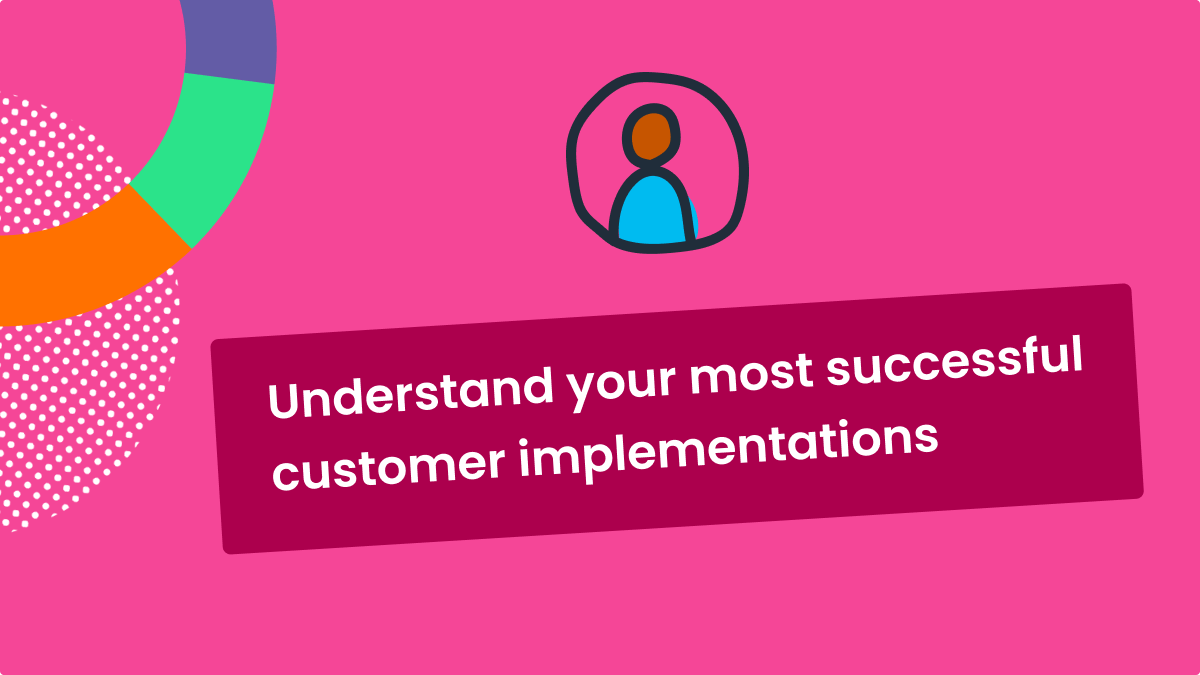Creating an ideal customer profile (ICP) is essential to sales and marketing success. It enables marketing, sales, service, and leadership to focus on accounts with the greatest potential value to their organization.
According to Gartner, companies that invest in a well-defined ICP achieve compelling business results, including:
- Faster sales cycles
- Higher conversion rates
- Greater average annual contract values (ACV) and lifetime values (LTV)
The goal of developing an ICP is to identify the accounts with the greatest probability of becoming high-value customers.
Not sure how to develop your own ICP? No problem. We just went through this exercise ourselves and got you covered.
QuotaPath’s Ideal Customer Profile
- Size of company: 20-250 employees
- Uses a CRM to track sales deals, such as HubSpot and Salesforce
- Works in tech, or tech-adjacent fields
What is an ideal customer profile?
An ICP is a detailed description of a customer that can most benefit from your solution. It includes pertinent characteristics for focus accounts such as:
- Industry
- Annual revenue
- Geography
- Employee headcount – in specific departments or company-wide
- Software in tech-stack
Since it is common to include the presence of a key stakeholder at an account as an identifying characteristic of an ICP, ICPs, and buyer personas are sometimes confused.
To differentiate between the two, remember that ICPs focus on the account level, while buyer personas describe the decision makers, or buyers, at said account.
Why is it beneficial to establish an ICP and how does it impact RevOps strategies?
ICPs provide a deeper understanding of your most successful customer implementations.
In turn, this information can inform where your GTM team should focus prospecting efforts by targetting organizations with the highest potential return on investment. Creating and aligning around ICPs help you streamline your efforts and improve sales efficiency.
Some of the benefits organizations typically see from developing ICPs include:
- Saving time and money: Understanding the unique characteristics of your ideal customers allows you to focus your marketing campaigns and budget on prospects most likely to convert
- Improved content and campaign quality: Allows you to create more targeted, relevant, and personalized advertising and messaging
- Lead prioritization: ICPs make it easier to identify, rank, and prioritize quality leads to hand off to sales or to nurture
- Faster sales cycles: Improved content and campaign quality and lead prioritization helps reduce the length of sales cycles
- Reduced churn: As you sell to similar company profiles that have historically had the most successful implementations, you’ll notice churn decreases.
Now that you see the benefits, let’s review how to create your ICP.
Create Compensation Plans with confidence
RevOps, sales leaders, and finance teams use our free tool to ensure reps’ on-target earnings and quotas line up with industry standards. Customize plans with accelerators, bonuses, and more, by adjusting 9 variables.
Build a Comp PlanHow to create an ideal customer profile
There is no shortcut to creating an ICP for your business. But, it’s worth the time and effort to create your business’ unique ICP.
Here’s how:
1. Create a list of your best customers.
Finding your ICP requires a greater understanding of which of your accounts is experiencing the most long-term success with your product. These aren’t necessarily the accounts that have purchased the most from you. Rather, it’s the accounts that receive the most value from your solution.
Build a list of these customers and look for key characteristics shared by these accounts.
2. Identify common characteristics.
Now, dig deeper into your data to learn more about these shared attributes and to reveal more commonalities. This will give you a clearer picture of what your ICP looks like.
Data points to start with include industry, vertical, the technology used, business model, and size. Additional data to investigate include purchase volume, long-term contract value, account growth and expansion, renewal rates, company age, and geography.
Then, review your findings from the data and select a handful of metrics to use in your actual ICP, such as customer lifetime value, cost per acquisition, and monthly revenue. What you choose will depend on your specific business.
3. Define challenges and use cases.
Identify the challenges each ICP faces and how your product solves these issues. This determines common use cases amongst the accounts.
Now you can shape your messaging to ICP prospects based on these shared challenges and wins.
4. Create an ICP document.
Time to document your findings for easy reference.
Your documentation must clearly define each ICP and list all their defining characteristics.
A visual document in PowerPoint slides or a PDF is most effective. But, don’t use a spreadsheet as it can be too cumbersome.
Once you have that laid out, share it with your entire organization and especially your GTM team. Use your ICP to build quality prospect lists, identify and prioritize quality leads, and finetune things like advertising, messaging, and onboarding processes.
Try QuotaPath for free
Try the most collaborative solution to manage, track and payout variable compensation. Calculate commissions and pay your team accurately, and on time.
Start TrialIdeal customer profile example
To help see this in practice, here is an ICP example for a B2B service desk software:
- B2B SaaS company
- Located in the U.S. or Canada
- Customer service team of at least 15 people
- Annual recurring revenue (ARR) of at least $30M
Their customer base consists of small and medium-sized businesses that require significant hand-holding and ongoing training.”
This example shows you that an ideal customer profile doesn’t list every single characteristic we discussed above. You and your team must determine which factors that are most relevant to include in your ICP.
Inform your go-to-market strategy with your ICP
Your ICP is an essential element in preparing or revising your go-to-market strategy. Without an ICP you risk wasting valuable time and money by chasing the wrong prospects.
Invest the effort to create your ICP so you can easily identify, understand, and communicate with your best customers. This enables you to achieve stronger results by accelerating sales cycles, increasing conversion rates, and boosting ACVs and LTVs.
This is not a one-and-done process. Since ICPs are based on data you should reiterate this process yearly, quarterly, or after any major changes to your product or service to keep your profiles current.
We hope you find this ICP guide helpful. Stop back for additional free RevOps resources, and don’t forget to check out our library of tools including:
To learn more about QuotaPath’s automated commission tracking and sales compensation management software, chat with our team today.



